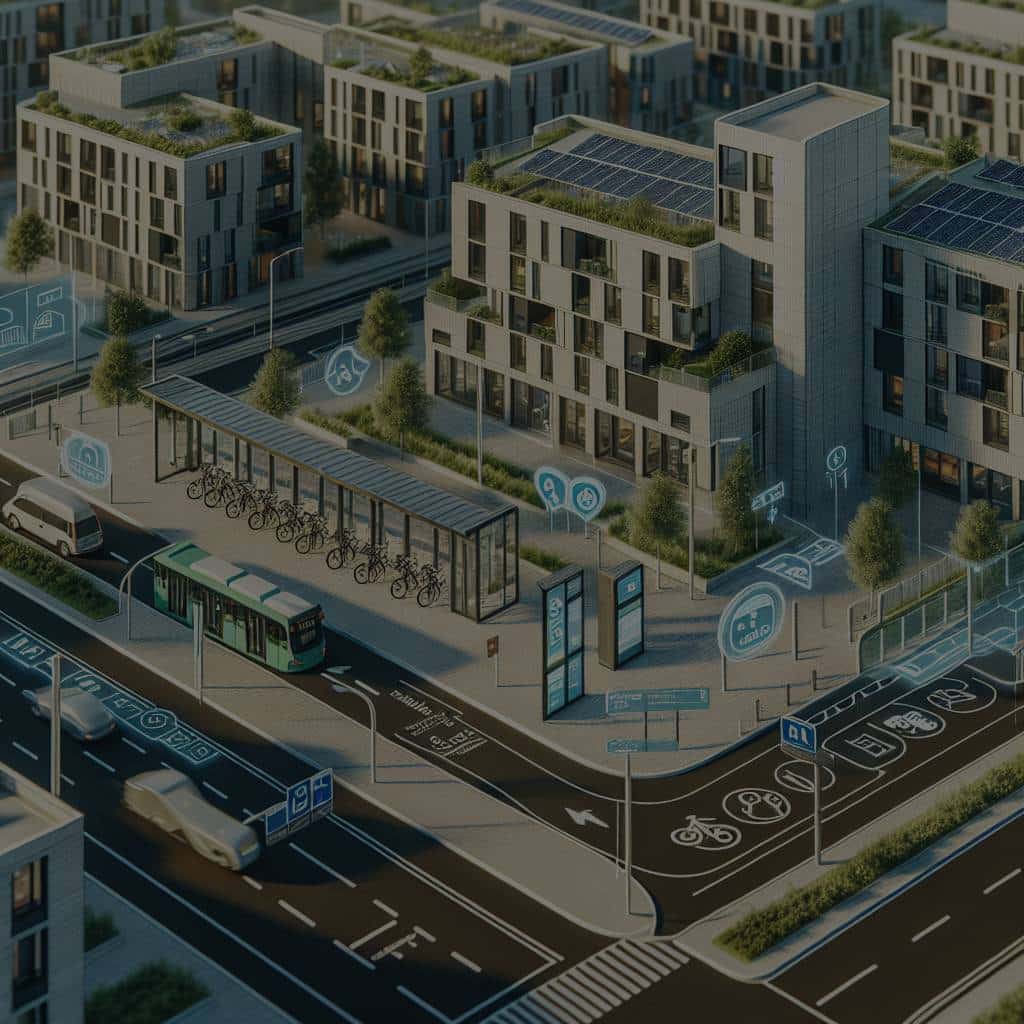How to Develop Real Estate Projects with a Focus on Sustainable Public Transportation Access?

In the realm of urban development, a growing trend points towards the necessity of creating sustainable cities. A key facet of this paradigm shift is integrating public transportation systems into real estate projects. Urban planners, developers, and stakeholders are now championing Transit-Oriented Development (TOD) as a solution for creating sustainable urban environments. This article will delve into the intricate process of developing real estate projects with a focus on public transportation access and how it fosters sustainable cities.
The Concept of Transit-Oriented Development (TOD)
Transit-Oriented Development is a type of urban planning that integrates residential, office, retail and other amenities into a walkable neighborhood located within a half-mile of quality public transportation. Emphasis is placed on creating vibrant, livable, sustainable areas where people can live, work, and play all in one place without the need for a car. With this approach, real estate projects can contribute to the sustainability of cities.
Also to see : What Are the Long-Term Economic Benefits of Investing in Energy-Efficient Residential Buildings?
The TOD concept is not new. However, it has gained increased attention in recent years due to the mounting concerns about environmental degradation, economic sustainability, and the quality of urban life. When properly executed, TOD can provide a wide array of benefits, such as reduced reliance on cars, lower transportation costs, more vibrant neighborhoods, increased economic activity, and better health outcomes.
Integrating Public Transit in Real Estate Development
Integrating public transit into real estate development requires careful planning and coordination among various entities including developers, transit agencies, local government, and community members. This process begins with the selection of an appropriate location. Sites should ideally be located near existing or planned transit stations, and should have the potential for increased density. The development should also be designed in a way that encourages walking, biking, and use of public transit.
This might interest you : What Are the Most Effective Strategies for Marketing Luxury Properties in a Digital Age?
The National Association of Realtors (NAR) also suggests incorporating mixed land uses into these developments. This means integrating retail, office, residential, and other uses into a single project to create a dynamic, vibrant environment that attracts people to live, work, and play. It also reduces the need for long-distance travel, thereby promoting sustainability.
Infrastructure and Economic Considerations
Infrastructure is a critical component in the development of TOD projects. Public transit systems need to be efficient, reliable, and user-friendly to attract potential residents and businesses to the area. This often requires significant investment in infrastructure improvements, such as new transit stations, improved sidewalks and bike lanes, and enhanced transit service.
Economic considerations also play a crucial role in the success of TOD projects. Real estate developers must ensure that their projects are financially viable, while also contributing to the economic vitality of the area. This can be achieved by creating mixed-use developments that attract a diverse range of businesses and residents, thereby creating a strong local economy.
The Role of Sustainability in TOD
The concept of sustainability is at the heart of TOD. By focusing development in areas with good transit access, TOD can help reduce greenhouse gas emissions and other forms of environmental pollution. It also promotes the efficient use of land, another key component of sustainable development.
Additionally, TOD can contribute to social sustainability by creating inclusive communities that cater to a diverse range of income levels. This can be achieved by incorporating affordable housing options into TOD projects. In this regard, public policies can play a crucial role in promoting the development of affordable housing in transit-oriented areas.
The Impact of TOD on Cities
TOD can have a significant impact on cities, transforming them into more livable, sustainable, and economically vibrant places. It can help reduce traffic congestion, improve air quality, promote physical activity, and create more vibrant neighborhoods. Additionally, by attracting new residents and businesses, TOD can strengthen the local economy and increase tax revenues.
It’s important to note that while TOD offers many benefits, it also presents challenges, including the risk of gentrification and displacement. Therefore, it’s crucial for cities to implement policies that preserve affordable housing and protect vulnerable communities from displacement.
In conclusion, developing real estate projects with a focus on sustainable public transportation access is not just about building structures but also about creating sustainable, livable cities. Through careful planning and execution, TOD can contribute significantly to the development of sustainable cities.
Pioneering Examples of Transit-Oriented Development
Famous for its elaborate public transportation networks and sustainable urban planning, cities like Copenhagen, Vancouver, and Tokyo are leading examples of Transit-Oriented Development. Their success stories in implementing TOD can be an inspiration and a blueprint for other cities aiming to develop sustainable real estate projects.
Copenhagen, the capital of Denmark, has an excellent sustainable transportation system that incorporates cycling, walking, and public transit. The city’s biking infrastructure, coupled with an efficient rail transit system, has significantly reduced traffic congestion and carbon emissions. Over half of Copenhagen’s population commutes by bike daily, contributing to the city’s high environmental sustainability.
In Canada, Vancouver is celebrated for its successful integration of TOD in its property development projects. A primary example is the Olympic Village, a residential community located close to public transit, amenities, and the city center. These factors have led to a significant increase in property values within the community while also reducing the residents’ carbon footprint.
Tokyo, Japan’s bustling metropolis, has effectively incorporated TOD into its urban planning. With one of the busiest and most efficient public transportation systems in the world, Tokyo has managed to maintain its position as a thriving economic powerhouse while also promoting sustainable transport and environmental sustainability.
The Future of Transit-Oriented Development
Looking to the future, the trend towards Transit-Oriented Development is expected to continue. As urban populations grow and concerns about climate change increase, the demand for sustainable real estate projects near public transit is likely to surge.
TOD is not a one-size-fits-all solution. The specific characteristics of each location, such as geography, demographics, and local economic conditions, need to be taken into account during the planning phase. However, with proper planning and innovative design, TOD can contribute significantly to the formation of sustainable, livable cities.
Technological advancements are also likely to play a significant role in the future of TOD. For instance, the growth of autonomous vehicles and ride-sharing services could reshape the way we think about transportation and land planning. Additionally, smart technologies, such as IoT and AI, could help to make public transit more efficient and user-friendly.
Moreover, as more people and businesses realize the benefits of TOD, there is likely to be increased demand for real estate in transit-oriented areas. This could potentially lead to higher property values and increased investment in these areas.
The future of TOD depends on cooperation between state local governments, real estate developers, transit agencies, and community members. By working together, these stakeholders can create sustainable, livable communities that meet the needs of current and future generations.
Conclusion
Developing real estate projects with a focus on public transportation access is not just an architectural endeavor—it’s a commitment to creating sustainable, livable cities where people can thrive. Transit-Oriented Development has the potential to transform urban areas, reducing traffic congestion, promoting economic growth, and enhancing environmental sustainability. Despite the challenges, the rewards are considerable, and the trend towards TOD is likely to continue. By taking bold steps towards integrating public transit into real estate development, cities can make significant strides towards a more sustainable future.
